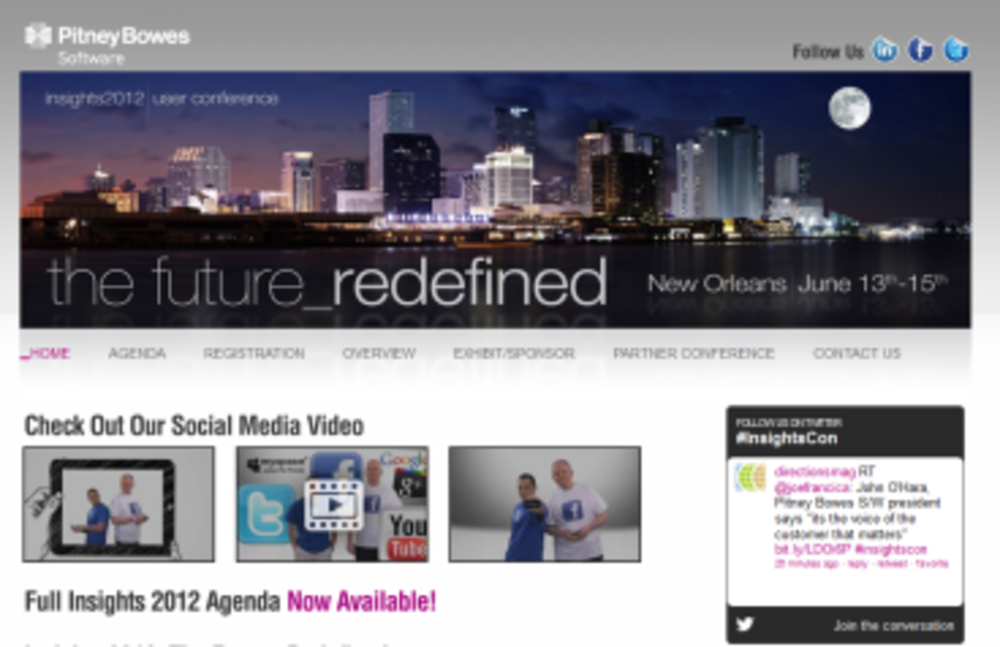Pitney Bowes is expanding from a provider of physical customer communications solutions to a global provider of both physical and digital customer communications, says John O’Hara, president of Pitney Bowes Business Insight at the company’s Insights conference in New Orleans, La., on June 13.
The company, which according to O’Hara oversees 70% of physical communications — such as statements from banks and credit card companies — is expanding its technological stack to include the ability to handle big data in a digital environment.
“We believe our heritage in physical will help us breach that digital gap,” O’Hara says. “We have the technology to do that. We’re like Microsoft Excel on steroids. We can process up to 3 million PDFs per minute.”
Currently, Pitney Bowes emphasizes solutions like Volly that allow brands to move nominally physical customer communications into an online repository. “All of the banks are trying to move that way,” O’Hara adds.
However, the second stage of the company’s expansion involves also making the move into marketing environments via new products and partnerships. For instance, the company partnered with data marketing firms Acxiom and Experian Marketing Services, O’Hara says, to enhance the data.
The company couples that data with its Explorer product to build “360 views” of the customer. “Imagine a set of baseball cards on the table,” O’Hara says. “On one of those cards is your name. It’s got all the background information. And behind it, it has all the wealth and transactional details. It’s a very intuitive means of building profiles of your customers.”
Pitney Bowes also fields a solution called Spectrum, a data intelligence and management platform as well as a geographic information system (GIS) built on technologies gained from the recent acquisitions of MapInfo and Group 1 Software, O’Hara says.
In its Q1 earnings report released in May, Pitney Bowes revealed that Facebook had chosen Spectrum to power the social network’s own location capabilities and to help build “the world’s largest
point-of-interest database,” says O’Hara. “Right now they’re using a proprietary solution, which is nowhere near as accurate.”
Specifically, Facebook will use the Enterprise Geocoding Module, a component of Spectrum. Berk Charlton, director of product management at Pitney Bowes Software, says that the multi-year Facebook deal is the largest installation of geocoding in the world. Facebook’s check-in feature will ultimately be powered by Pitney Bowes’s reverse geocoding software, which correlates a device’s location with a listed address.
“Facebook [was] looking for scalability, coverage, and performance,” Charlton says, adding that the full roll-out will occur “soon” though declining to specify an exact timeframe for the deployment.
Within the next year Pitney Bowes will build connections between Spectrum and Explorer so the two data feeds and interfaces will complement each other, says Mark Smith, SVP and GM of customer analytics and interaction at Pitney Bowes Software.
O’Hara emphasizes that Pitney Bowes is not attempting to replace legacy CRM solutions from companies like Oracle or Salesforce.com. “We don’t want to play in the Salesforce automation place,” O’Hara says. “We don’t want to play in the contact space. We append and enhance data capabilities.”
Similarly, companies like Google are currently and will remain a “huge partner,” O’Hara adds. “We take Google maps and build it into our technology. We use them to render our maps. I see players such as Google producing a static representation of where someone may be. What we do is present a dynamic representation.” He adds that while Google is largely a consumer play, Pitney Bowes will continue to focus on the b-to-b space.
Partnerships, such as those with Facebook, Acxiom and Experian, will be important in driving Pitney Bowes’s expansion into becoming a provider of digital communications solutions. O’Hara positions the company as one that can enhance existing enterprise technologies and datasets.
“We are a technology enabler,” he says.





